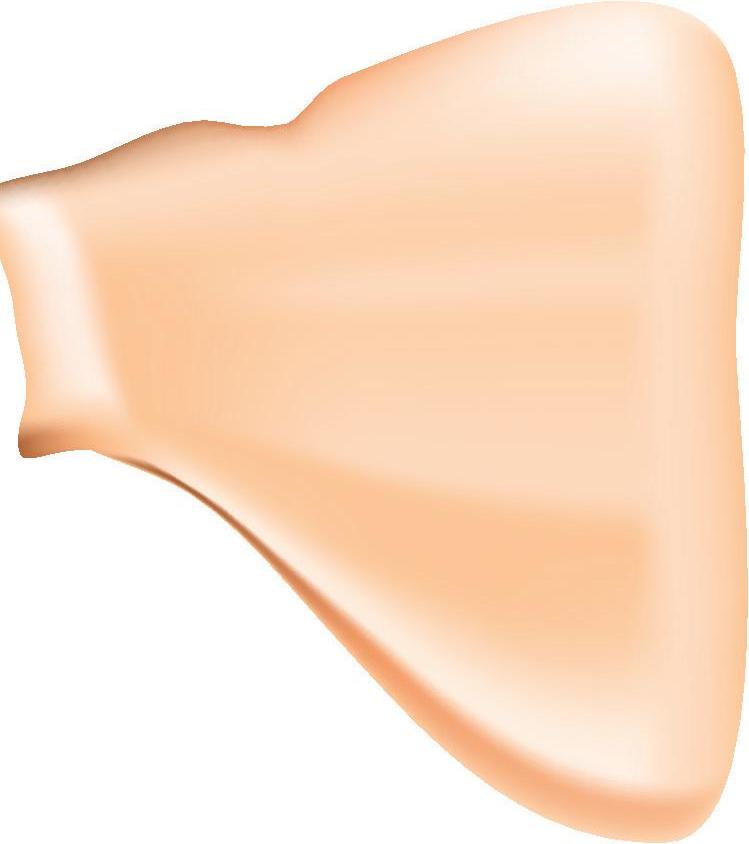
2 minute read
HOW TO FIX A FROZEN SHOULDER. It’s a painful
Clavicle (collarbone)
Shoulder Capsule
Humerus (upper arm)
Scapula (shoulder blade)
HOW TO FIX A FROZEN SHOULDER
IT’S A PAINFUL CONDITION, BUT PHYSICAL THERAPY CAN HELP.
What is frozen shoulder?
Stiff ness and pain in the shoulder joint, known as adhesive capsulitis. Strong connective tissue called the shoulder capsule holds the ball end of your upper arm bone in the shoulder socket. With frozen shoulder, the capsule contracts, preventing or restricting motion. What causes it? Th ere’s no known cause. Diabetes appears to be a risk factor, as does having a shoulder immobilized for an extended period of time due to a fracture or surgery. People over 40, particularly women, are more likely to have frozen shoulder.
MINA ABDELSHAHED, MD HOWARD M. PECKER, MD
What are the symptoms? In the first phase, inflammation and pain increase. Then the shoulder “freezes,” getting progressively stiffer. “A hallmark of this condition is loss of motion,” says Howard M. Pecker, MD, an orthopedic surgeon with Robert Wood Johnson University Hospital (RWJUH ) Rahway. “Typically, a person can bring his or her arm straight up into the air, 180 degrees, like a protractor in geometry. With frozen shoulder, they start to notice decreased ability, until they can only lift their arm 45 to 50 degrees.”
When should you see a doctor?
“Patients who get treatment for frozen shoulder early on tend to recover a lot quicker,” explains Mina Abdelshahed, MD, an orthopedic surgeon with RWJUH Rahway. How is it diagnosed? Th e orthopedist will review the patient’s medical history and do a physical exam that includes moving the shoulder carefully in diff erent directions. An X-ray can determine whether the pain could be caused by arthritis in the shoulder, and an MRI may be done. How is it treated? “Nonsteroidal anti-infl ammatory drugs such as ibuprofen are helpful,” says Dr. Abdelshahed. “Th ese and other medications help make physical therapy, which is very important, tolerable.”
What does physical therapy do?
“Th e most fundamental component of treatment is movement under the guidance of a physical therapist,” says Maria Cesari-Redondo, MSPT, a physical therapist (PT) at RWJ Rahway Fitness & Wellness Center in Scotch Plains.
“Th e evaluation process will identify the stage of the condition, based on a four-stage scale: Pre-freezing, Freezing, Frozen and Th awed,” she explains. “Th e therapist will then create an individualized exercise program.” Exercises will be both active (done by the patient) and passive, in which a PT will move the shoulder for the patient to improve blood fl ow and increase fl exibility. Resistance-based exercises are an important component of the therapy, especially in the Th awed phase.
How long does therapy last?
“Patients are typically seen two to three times a week for approximately eight weeks. However, it can vary greatly depending on the patient’s condition,” Cesari-Redondo says. “Patients are encouraged to follow a home exercise program as directed to achieve functional levels.” Very rarely, frozen shoulder can recur in the same shoulder, but it will sometimes appear in the opposite shoulder, she explains.
“Understand that near recovery may take 15 to 24 months with the continuation of a home exercise program,” she says. “It is important to continue to follow up with the orthopedic physician as needed.”
To fi nd an orthopedist at RWJUH Rahway, call 888.724.7123 or visit www.rwjbh.org/ortho. To learn about physical therapy at RWJ Rahway Fitness & Wellness Centers in Scotch Plains and Carteret, visit www.rwjrahwayfi tness.com or www.rwjfi tnesscarteret.com.










